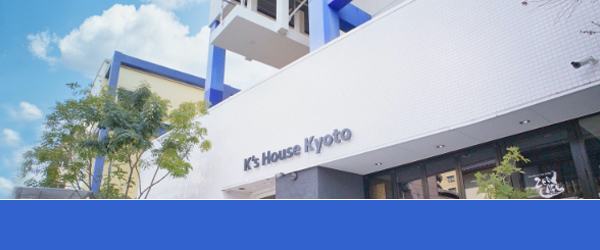Kyoto is an amazing city for festivals and events.
There are so many of them throughout the year. Here are eight we recommend.
1. Aoi festival (May 15th)
As the weather starts to get warmer and warmer, one of Kyoto’s three biggest festivals takes place.
This festival is believed to have started around 1500 years ago. It is held at the Kamigamo and Shimogamo shrines. The name of the festival comes from a plant named Aoi. This plant is believed to connect people to the gods, and is also the symbol of these two shrines.
On May 15th, a procession is held where people dress like nobles from the Heian period (794AD-1185AD). They walk from the Imperial Palace to the two shrines.
The procession starts at 10:30 at the Imperial Palace and arrives at Shimogamo Shrine around 11:40. There, the participants perform some rituals, and pause for lunch. After, the procession starts again and finally arrives at Kamigamo Shrine around 15:30.
You can see the festival route here↓

 The festival is named after this plant, which is called Aoi.
The festival is named after this plant, which is called Aoi. This festival is a great time to see the costumes of the Heian period.
This festival is a great time to see the costumes of the Heian period. Carts with seasonal flowers like this was used by Imperial messengers. Nowadays, they are just decorations.
Carts with seasonal flowers like this was used by Imperial messengers. Nowadays, they are just decorations. Large traditional umbrellas are decorated with fragrant bundles of seasonal flowers.
Large traditional umbrellas are decorated with fragrant bundles of seasonal flowers.2. Gion festival (July)
The Gion festival is one of the biggest and most famous festivals in Japan. It was first held in AD 869 as an event to try and rid Japan of disease and natural disasters. Although the festival has changed form through different periods of history, it still continues to be held today.
Gion Festival lasts for the whole month of July and consists of many different events.
The most impressive event of Gion festival is the main parade of floats, which is held on July 17 (there is another smaller parade of floats a week later, on July 24). For the 3 days before the parade on the 17th, nightly events are held. On July 15th and 16th, streets in the center of Kyoto are made into pedestrian zones after 6pm. There are food stalls and carnival games on the streets. Many people go out to see the floats (which are on display), and to enjoy the festival.
Many of them wear yukata (traditional Japanese summer dress) and wooden sandals. Women wearing yukata often do their hair in a traditional way. It is very interesting to see ordinary people dressed up in this traditional Japanese style.
The smell of many different foods fills the air. The sound of people talking and laughing, and the music of the floats can be heard. The atmosphere is very lively.
The floats are put on display in different streets, lit up by lanterns. All of the floats are different in shape and size, all of them colorfully decorated. Each of them has a story. There are boards near each float that explain the stories. On some floats, there are people who play music. You can pay 500-1000yen to get up on the floats yourself, and see the music players up close.
Floats are lit up in the evening. Each of them has different lanterns. This float has people sitting in it playing music.
The parades of floats on July 17 and 24
The highlights of Gion festival are the parades of floats on July 17 and 24. Hundreds of thousands of people come to see the colorful floats parading in the city center. It is like watching a moving museum with different costumes and floats.


You can enjoy Kyoto’s traditional culture by viewing the luxurious and splendid floats.
The floats are very big and heavy. When people have to turn them around corners, they first put bamboo on the ground and spray water on top. That makes the road more slippery and makes it easier to turn the floats. This video shows people taking out bamboo slats in preparation for turning the float.

People are in the process of turning a large float, which is shaped like a boat. It takes a lot of effort, skill, and time to maneuver such a big float. When the turn is finally completed, festival visitors reward the participants with a round of applause.
This section of the parade has two umbrella floats, and is very cheerful.
This float is the only one with parts that move by themselves, in this case a mantis on the top of the float.
One of the most important events of the festival takes place in the evening on July 17th. People take Mikoshi (portable shrines) to different areas of the city. It is a religious ritual aimed at cleaning out “dirty” things.
After the parade during the day, there are also activities on the nights of the 17th and 24th.
3. Mitarashi festival (July)
The Mitarashi festival is a very popular festival in Kyoto held on what is traditionally thought to be the hottest day of the year.
People go to Shimogamo Shrine to pray for good health. They walk through a cool stream on the shrine grounds, and drink holy water. This is said to help keep illness away.
Around the shrine, there are some stands which sell drinks and Japanese desserts. Buy a cup of matcha and a dessert, sit under the shade of tall trees, and listen to the sound of cicadas singing. It is a nice way to escape from the summer heat.
 People put their feet in the cold water and then pray for health.
People put their feet in the cold water and then pray for health.4. Fire walking festival (July 28th)
Every year in Tanukidanisan Fudoin (a temple in the north of Kyoto), there is a fire festival. It is held to pray for safety and health.
As it falls dark and you can see the moon hanging above the forest, around 20 yamabushi set fire to piles of wood on the temple grounds. Yamabushi are monks from an esoteric Buddhist sect, who traditionally train by performing feats of endurance in the mountains. As the fire at the festival gets bigger and bigger, the yamabushi start to pray. They chant Buddhist sutras in front of the fire, praying for the fire to take away disaster and illness.
After, the yamabushi start to put out the fire, and allow the remaining charcoal to cool down. Then, they start to walk over the charcoal without shoes on. After the yamabushi have finished, regular festival attendees are allowed to walk across the charcoal as well. Walking on the warm charcoal, with remnants of the fire still on the sides, is a very interesting experience.
A large fire is lit while Yamabushi chant sutras. The holy fire is said to have the power of getting rid of evil things.
A Yamabushi prays in front of the fire and blesses festival attendees.
When the charcoal has cooled down enough, Yamabushi and festival attendees walk across it. This is a ritual done to pray for safety and good health.
5. Lake Biwa fireworks festival(August 8th)

Summer is the season for fireworks in Japan. All over the country, there are many fireworks festivals held in summer. In the region around Kyoto, one of the biggest is held each year on August 8th at Lake Biwa(in Shiga prefecture). Lake Biwa is the largest lake in Japan, and is easily accessed from Kyoto via a short train ride. In 2023, around three hundred thousand people went to see the Lake Biwa fireworks festival.
Many people wear Yukata to the festival. In Japan, lots of people wear Yukata to see fireworks. The fireworks start at 19:30, and last for one hour. Around 10,000 fireworks, in many different colors and shapes, are fired into the sky. They explode in the dark sky and fall down towards the lake, leaving bright shadows on the water.

6. Gozan okuribi (August 16th)
Obon is an important holiday in Japan, that revolves around honoring one’s ancestors and deceased relatives. It is held in the middle of August.
Gozan Okuribi is a festival in Kyoto that takes place during the Obon holiday. The festival involves bonfires which are lit on five mountains surrounding Kyoto, one by one. The first one is lit at 8pm, and the others are lit at 5 minute intervals after that.
The bonfires are each in a specific shape: three of them are in the form of Chinese characters, one is in the form of a boat, and one is in the form of a torii (traditional gate to a Shinto shrine). The fires are said to help the spirits of deceased ancestors – who come to visit their relatives during Obon – find their way back to the spirit world.
 The fires are lit in different shapes.
The fires are lit in different shapes. The fires are very bright. They can be seen from far away.
The fires are very bright. They can be seen from far away.
In Arashiyama, people also put small lanterns in the river. It is believed that the spirits float away with the lanterns. In this part of the city, you can see the light of the lanterns on the river alongside the bonfires from the mountains beyond.
7. Jidai festival(October 22nd)
Along with the Aoi festival and Gion festival, Jidai festival is also considered one of the three biggest festivals in Kyoto. It was started in the Meiji period to celebrate the many centuries when Kyoto was Japan’s capital.
The word “jidai” means era, and the festival celebrates the many different eras of Kyoto’s history, from the Heian Period (when Kyoto was first made capital) to the Meiji period (when the emperor Meiji moved the capital to Tokyo).
There are many activities during the day. The most popular is the parade, which starts at 12:00.
Starting at that time, about 2000 people forming 20 different groups march from the Imperial Palace to the Heian Shrine. They wear traditional clothing representing different periods of Japanese history. Also, people dress up as famous historic characters such as Sakamoto Ryoma, the famous hero who was involved in the Meiji Restoration and was assassinated at a young age (imagine a 19th century, samurai version of Che Guevara).
Route(Japanese Only):https://www.heianjingu.or.jp/festival/jidai_line.html
 Sakamoto Ryoma appears.
Sakamoto Ryoma appears.
Famous women can also be seen in the parade. This woman is the daughter of a 19th century Emperor, who married the 14th Shogun of the Edo Period (1603-1868).
8. Kurama fire festival(October 22 nd)
October 22nd provides two exciting festivals for those in Kyoto: after the Jidai festival is held during the day, you can go to see the famous Kurama fire festival the same night.
It takes place in a small village called Kurama which lies to the north of Kyoto. The festival started more than 1000 years ago, when the emperor ordered a shrine (honoring the god Yuki Daimyojin) to be moved from the palace grounds to the village of Kurama. The local people lit fires to welcome the arrival of the shrine procession from the palace, starting a tradition that still goes on today.
The festival starts at around 18:30, though the narrow streets of Kurama are already packed before then. At 18:30, people start to set fires in front of houses in the village and the Yuki shrine. The highlight of the festival is watching people carrying large, flaming torches around the village. At around 20:00, these torches are lit on fire and half naked men start to carry them to the shrine, while yelling out “Saireiya, Sairyo!” (these two words both mean “festival” in ancient dialect).
After all the torches are brought to the shrine, they are all put together. Finally, people carry two Mikoshi(small portable shrines) from the shrine down through the village. It is great to experience the local festival.
Official Web Page (Japanese only)): http://www.yukijinjya.jp/about/index.html?id=about05
Kyoto is a great place for festivals and events. If you want to know about them, please come to our reception and ask us at K’s House Kyoto.








